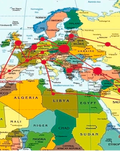Tigray tragedy, a graphic essay
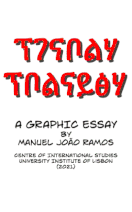
A graphic essay on the early stages of the civil war in Ethiopia, that started on November 3rd, 2020. Its source material are on-the-ground testimonies detailing different views on the conflict. The essay makes use of the formal iconographic style of traditional Ethiopian painting to address the traumatic effects of the war in a way that may be immediately readable by Ethiopians, while offering non-Ethiopian readers, less familiarised with the conflict and with its political and symbolic underpinnings, the means to understand its multisided nature. ...MORE
PDF version / E-Pub version / Introductory word / Interview by Michaela Frauwallner
PDF version / E-Pub version / Introductory word / Interview by Michaela Frauwallner
‘If you don't migrate, you're a nobody’: Migration recruitment networks and experiences of Nepalese farm workers in Portugal
|
(With C. Pereira, A. Pereira, A. Budala, S. Dahal, J. Daniel-Wrabetz, J. Meshelemiah, J. Carvalho, R. Carmo, R. Pires) This paper analyses the networks, experiences and aspirations of Nepalese workers in Southern Portugal's farms and greenhouses. The main research objective is to analyse how recruitment networks, which supported the move of Nepalese to Portugal, were established and have rapidly consolidated. These networks impacted not only the increase of irregular migration flows but also the migration experience and vulnerability in the country of destination, including the passive acceptance of a certain degree of exploitation. ...MORE
|
Ceci n’est pas un Dessin: Notes on the Production and Sharing of Fieldwork Sketches
|
|
See also: FIELDWORK SKETCHES. GONDÄR, ETHIOPIA, 2015
This paper cum graphic essay discusses the ontological and social conditions for the production and reception of knowledge-in-the-field sketches, on drawing as practice and as materiality, and on its bordering with writing. Whereas the topic of how anthropologists link intimate written information gathered in the field with public production of knowledge in academic format – the so-called “writing culture” (an expression originated in Clifford and Marcus 1986) –, seems all but exhausted today, little attention has historically been given to the place and goals of sketching as part of that meandering process. MORE... |
Castle Building in Seventeenth Century Gondär (Ethiopia)
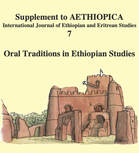
Gondär’s evolution to becoming the empire’s capital went hand in hand with the construction of castles by members of the royal family, supported by foreign builders. However, foreign presence left its marks not only in the capital’s architecture, but also in the Jesuit missionary reports of the time. As that history was written mostly from the Portuguese point of view, it is difficult to ascertain the dimension of foreign involvement in the empire’s development; and Ethiopian written sources also rather rarely mention the presence of färänǧ. As ‘history’ is usually written by the majority or victorious group, this contribution challenges the written reports, confronting them with oral traditions. ...MORE
Suddenly last summer - how the tourist tsunami hit lisbon
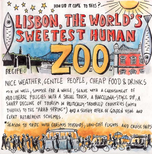
See also: TOURISTIFICATION IN LISBON - A COLLECTION OF ETHNOGRAPHIC DRAWINGS.
(With Daniel Malet) The recent touristification of Lisbon, Portugal’s capital city, is forcing a collective revision of the city’s identity and its patrimonial narratives, to make sense of the growing contrasts between marginality and centrality, circulation and calm, abandonment and limelight, indigence and affluence, spleen and euphoria. We describe the historical process that led to the transformation of Lisbon, and focus in the top-down projects and policies developed during those years to liberalize many aspects of the economy. ...MORE
(With Daniel Malet) The recent touristification of Lisbon, Portugal’s capital city, is forcing a collective revision of the city’s identity and its patrimonial narratives, to make sense of the growing contrasts between marginality and centrality, circulation and calm, abandonment and limelight, indigence and affluence, spleen and euphoria. We describe the historical process that led to the transformation of Lisbon, and focus in the top-down projects and policies developed during those years to liberalize many aspects of the economy. ...MORE
Drawing Close - On visual engagements in fieldwork, drawing workshops and the anthropological imagination
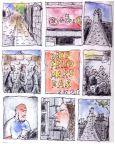
(With Aina Azevedo) Is drawing a suitable medium for acquiring and transmitting anthropological knowledge? If yes, is it definable as a visual method in anthropological research? These are questions seldom put forward and answered in mainstream anthropological theoretical publications. These questions, however, are quite engaging for a growing number of researchers who are also practitioners of an equally increasing variety of graphic-based productions: sketchbooks made during fieldwork, illustrations of anthropologic materials, creation of comic art and graphic novels, and uses of drawing in participatory research approaches. ...MORE
Stop the Academic World, I Wanna Get Off in the Quai de Branly. Of sketchbooks, museums and anthropology
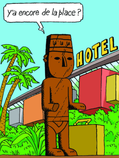
Drawing as part of ethnographic observation practices has been systematically undervalued in anthropology, due to an academic tradition that has long favoured realist writing. Yet, sketching, not only as part of one’s fieldwork activities, but as a means to convey one’s first-hand impressions and interpretations can be given some room in academic publishing, if its rules are to be tweaked and image-recognition and tagging are introduced. To help make this case, this article presents the reader-viewer with a practical instance of interaction between field notes and drawings produced during a series of visits to the Parisian museum of Quai de Branly, as means to a reflexion about the potential of drawing in anthropology’s teaching and research practices. ...MORE
Pedro Páez's History of Ethiopia: On exploration, refutation and censorship
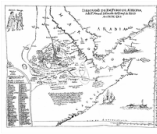
Pedro Páez introduces the reader to the long sought after River Nile and to his own empirical explorations of its source and course, in Chapter 16 of Book 1 of the History of Ethiopia. What we now know about the complex history of its exploration, and the millennial polemics surrounding the establishment of its sources and the expanse of its network, must neither belittle nor overestimate the actions and interpretations of the man who, as he very self-consciously puts it, claimed to be the first European to reach the remote double spring from which the Blue Nile waters first come over ground. ...MORE
Ambiguous Legitimacy: the Legend of the Queen of Sheba in Popular Ethiopian Painting
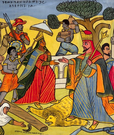
(With Isabel Boavida) Traditional Ethiopian Christian art is a genre born and bred under the stylistic and structural conditionings of traditional religious painting. But, to a great extent, it survived and developed thanks to the fact that, for over a century now, Western expatriates and tourists have been interested in buying it. Such paintings are generally thought of as a "folk" and "naïf" in that they continually repeat the same historical or ethnographic themes in a very conventional way. An important feature of these paintings is the fact that they are composed of a series of rectangles organized in strips and thought of as "stories" that usually share a number of codifying elements. ...MORE
On the Embedment of Classical Models of Dichotomy in Modern Anthropology: the Case of Literacy Studies
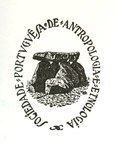
In the final part of his work Phaedrus, Plato presents his readers with a remarkably subtle proposition. In order to distinguish true philosophical knowledge from both oratory and written discourse, he lets Socrates confront Phaedrus in a long dialogue. To Phaedrus, the written word seems the effective means to achieve true knowledge, unlike oral speech, laden with rhetoric and persuasion; but for Socrates that is clearly not so. Therefore, he proceeds to "report" (or, as Phaedrus later suggests, to make up) an old Egyptian myth, where the demon-god Thoth offers king Thamus his most cherished invention: the art of writing; writing, he says, would be the solution to overcome ignorance and loss of memory. ...MORE
origen y evolución de una imagen cristo-mimética: el preste juan en tiempo y el espacio de las ideas cosmológicas europas
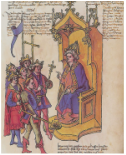
Si la imagen medieval de Oriente y del Preste Juan han condicionado descubrimientos geográficos actuales, así como la expansión política y cultural de Europa, esto fue posible debido a una tradición literaria y una memoria enciclopédica que crearon un marco para percibir y relacionar estructuras de tiempo y espacio en su única realidad posible: la de la mente humana. El tiempo puede muy bien ser irreversible, pero el hombre sólo puede concebir el pasado, al igual que el futuro, en cada momento presente. ...MORE
